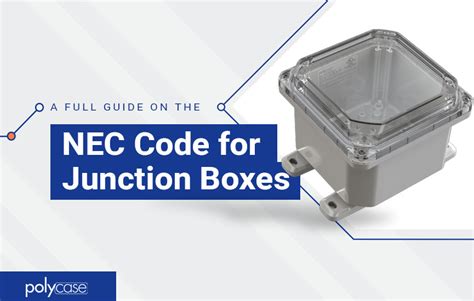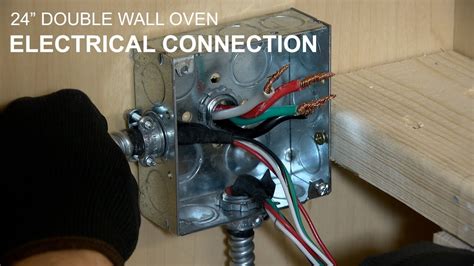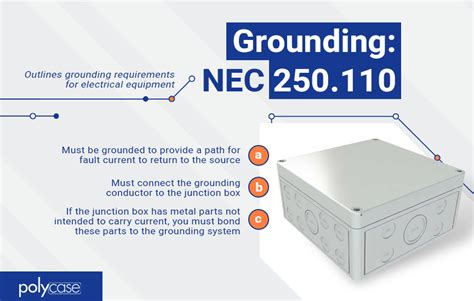3 inch behind drawer enough for junction box Common household wiring is usually 16, 14, or 12 AWG. As an example, the code allows 2 cubic inches of space for each 14-AWG conductor, so if you have two cables with .
What is CNC milling and how does this subtractive manufacturing process work? This article explores how CNC milling machines work, what kinds of parts you can provide with milling and the best design practices for getting the most out of this type of CNC machining.
0 · nec box under cabinet
1 · junction box for double oven
2 · electrical junction box nec
3 · double oven junction box mount
4 · concealing junction boxes under cabinet
5 · concealed electrical junction boxes
G-codes differ in different CNC machines, while M-codes are the same in most CNC machines. G-codes command the machine’s motion and function for the product’s design, while M-codes are used to conduct the non .
Junction boxes above drop ceilings are considered Accessible but if you have to remove part of the building (such as a piece of drywall) then it is NOT accessible. I had a . I'd rather not give up those extra 2-3 inches if I can avoid it, so I'm considering cutting a square hole in the back of the drawer space and putting the 4x4 junction box in that .
The obsolete 3-1/2" box is 3" across the flats and 3-1/2" across the diagonals. The screws are 2-3/4" apart. The modern 4" octagon box is 3-1/2" across the flats (arrrrgh, right?) . There should be enough room between the top and second drawer to get an old work box in. If none of that works, attach a wiremold box under the overhang within 6 in of the .
There is a 3 inch gap between the fridge and the cabinet holding the oven. Couldn't I just keep the junction box where it is and run the wire through the wall, up beside the fridge and back into . Common household wiring is usually 16, 14, or 12 AWG. As an example, the code allows 2 cubic inches of space for each 14-AWG conductor, so if you have two cables with . By understanding the function of junction boxes, using the right tools and materials, following a step-by-step guide, and avoiding common mistakes, DIY enthusiasts can tackle . If you can locate which stud cavity that line is in you could cut out enough for an old work style box and screw it in to your cabinets. It'll then be a normal sized hole. Start small .
So I'm thinking to add a junction box next to it to deal with the extra wire. Is it okay to just have it rest on the drywall? I'm working through 4-inch holes and don't want to open .
I am trying to find out if its code compliant to install a junction box behind a drawer in a kitchen. Access to the junction box would be possible if you take out the drawer. It wouldn't be easily accessible, with the drawer removed, but it would be accessible.
Junction boxes above drop ceilings are considered Accessible but if you have to remove part of the building (such as a piece of drywall) then it is NOT accessible. I had a house where the panel was behind some paneling that was . I'd rather not give up those extra 2-3 inches if I can avoid it, so I'm considering cutting a square hole in the back of the drawer space and putting the 4x4 junction box in that hole and securing it directly to the wall behind the cabinet. The obsolete 3-1/2" box is 3" across the flats and 3-1/2" across the diagonals. The screws are 2-3/4" apart. The modern 4" octagon box is 3-1/2" across the flats (arrrrgh, right?) and 4" across the diagonals. There should be enough room between the top and second drawer to get an old work box in. If none of that works, attach a wiremold box under the overhang within 6 in of the edge. Either a normal wiremold box, or one of those .
What is the AWG size of the conductors: 12 or 14? You need 2.0 cubic inches per #14, 2.25" per #12, and for other sizes see NEC 370-16 (b), which also outlines allowances for clamps, yokes. For example, if your largest connected wire is #14, you must allow 4.00" per switch. 16+8+2 = 26 cubic inches. Install the box surface mounted (come in the back with your feed) behind the drawer underneath the oven. The whip from the oven should be long enough to reach. Use a flex connector to come in to one of the KOs.There is a 3 inch gap between the fridge and the cabinet holding the oven. Couldn't I just keep the junction box where it is and run the wire through the wall, up beside the fridge and back into the oven wall at the top. Common household wiring is usually 16, 14, or 12 AWG. As an example, the code allows 2 cubic inches of space for each 14-AWG conductor, so if you have two cables with three conductors each (a total of six), you’ll need a box that’s 4″ .
By understanding the function of junction boxes, using the right tools and materials, following a step-by-step guide, and avoiding common mistakes, DIY enthusiasts can tackle wiring projects with confidence. I am trying to find out if its code compliant to install a junction box behind a drawer in a kitchen. Access to the junction box would be possible if you take out the drawer. It wouldn't be easily accessible, with the drawer removed, but it would be accessible. Junction boxes above drop ceilings are considered Accessible but if you have to remove part of the building (such as a piece of drywall) then it is NOT accessible. I had a house where the panel was behind some paneling that was .

I'd rather not give up those extra 2-3 inches if I can avoid it, so I'm considering cutting a square hole in the back of the drawer space and putting the 4x4 junction box in that hole and securing it directly to the wall behind the cabinet. The obsolete 3-1/2" box is 3" across the flats and 3-1/2" across the diagonals. The screws are 2-3/4" apart. The modern 4" octagon box is 3-1/2" across the flats (arrrrgh, right?) and 4" across the diagonals. There should be enough room between the top and second drawer to get an old work box in. If none of that works, attach a wiremold box under the overhang within 6 in of the edge. Either a normal wiremold box, or one of those .
What is the AWG size of the conductors: 12 or 14? You need 2.0 cubic inches per #14, 2.25" per #12, and for other sizes see NEC 370-16 (b), which also outlines allowances for clamps, yokes. For example, if your largest connected wire is #14, you must allow 4.00" per switch. 16+8+2 = 26 cubic inches. Install the box surface mounted (come in the back with your feed) behind the drawer underneath the oven. The whip from the oven should be long enough to reach. Use a flex connector to come in to one of the KOs.
nec box under cabinet
junction box for double oven
There is a 3 inch gap between the fridge and the cabinet holding the oven. Couldn't I just keep the junction box where it is and run the wire through the wall, up beside the fridge and back into the oven wall at the top.
Common household wiring is usually 16, 14, or 12 AWG. As an example, the code allows 2 cubic inches of space for each 14-AWG conductor, so if you have two cables with three conductors each (a total of six), you’ll need a box that’s 4″ .

electrical junction box nec
double oven junction box mount
concealing junction boxes under cabinet

A junction box – also known as an ‘electrical box’, ‘jbox’, ‘or ‘terminal box’ – is a protective box where wires are interconnected. Junction boxes are often built into the plaster of a wall, in the ceiling, or within concrete.
3 inch behind drawer enough for junction box|concealed electrical junction boxes